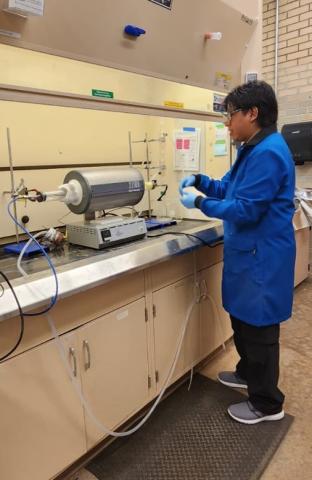
Luis Aguayo is a Master of Science candidate at Colorado School of Mines, working with CMI project lead Corby Anderson at the Kroll Institute for Extractive Metallurgy (KIEM) at Mines. Aguayo is a metallurgical engineer from Bolivia. Prior to coming to the United States, he investigated the direct reduction of iron ores from El Mutun, one of the largest deposits in the world. After earning a bachelor's degree in 2019, he was involved in the recovery of non-ferrous metals by pyro and hydrometallurgical methods. In 2021 he was selected as a recipient of the Fulbright-Laspau scholarship for his work in the extraction of zinc at the Universidad Tecnica de Oruro.
His advisor recommended a CMI research opportunity that would use his background in pyrometallurgy. Under Anderson's direction, Aguayo is working on a thesis titled “Chemical Beneficiation of Cobalt Minerals from Iron Creek, Idaho, by Thermal Decomposition of Pyrite,” which is focused on improving the cobalt grades of the deposit through a pyrometallurgical process. The study treatment also includes the production of high purity sulfur that could be used in the manufacture of fertilizers or sulfuric acid. This research is focused on the establishment of a sustainable domestic supply of cobalt, improving the recovery process of low-grade Co deposits, to decrease reliance on imported battery technologies.
During undergraduate studies in Bolivia, Aguayo knew the reputation of Mines as one of the best mining and extractive metallurgy institutions in the world. After earning his MSc degree this month, Luis will pursue a PhD program at the Earth Resources Science and Engineering (ERSE) in the Department of Mining Engineering at Mines. Working with CMI has helped him to sharpen his critical thinking and improve his communication skills. Also, he has learned new research methods and protocols, as well as analysis and characterization methods.
